First published April 2020 | Written by Vietnam Coracle
This post was last updated 4 years ago. Please check the comments section for possible updates, or read more on my Updates & Accuracy page.
INTRODUCTION |CONTENTS | RELATED POSTS
Beginning the last week of March, Vietnam closed all its land borders and ceased all international flights in and out of all domestic airports. The nation, effectively, went into self-isolation. Before the borders closed and flights were halted, there was an interim period, during which all passengers on all flights arriving in Vietnam went into mandatory quarantine for at least 14 days. My friend, Taz, was one of thousands of passengers arriving in Vietnam during this time. She was on her way back to Ho Chi Minh City, where she currently lives, from a holiday in Bali. As soon as she landed at Tan Son Nhat Airport, she was taken to a quarantine facility on the outskirts of the city, where she remained for 17 days. While in quarantine, I stayed in contact with Taz. Her experiences there interested me and she went through a range of emotional responses to her situation. After Taz had served her time in quarantine, I asked her to reflect on her experiences and share them, in the form of an interview.
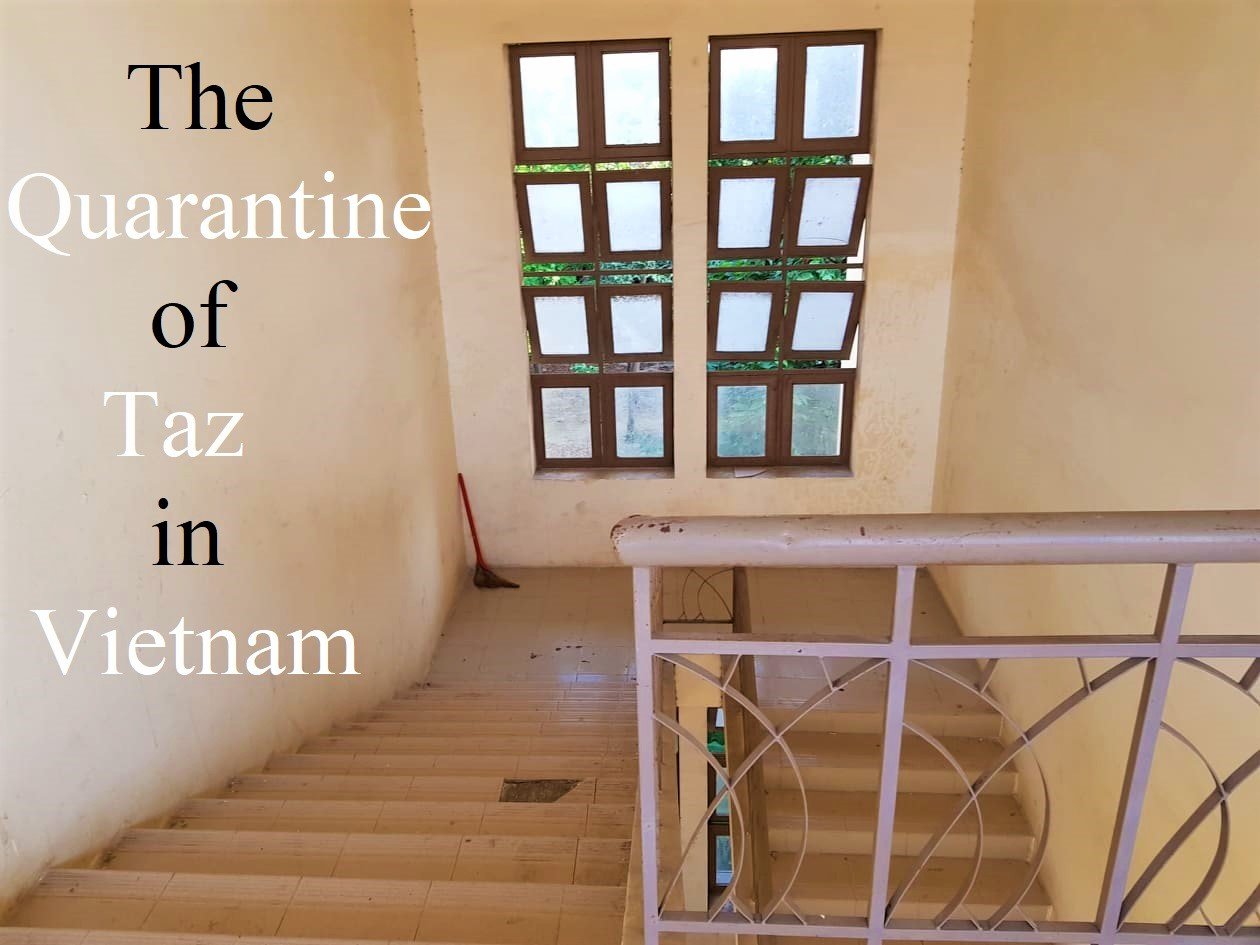
[Back Top]
THE QUARANTINE OF TAZ
Most people I know have been impressed by the way Vietnam has managed and contained the spread of COVID-19 so far. Indeed, there’s a growing sense of national pride associated with how effectively Vietnam has handled the virus. A large component of the country’s successful response to the outbreak of COVID-19 has been its quarantine of tens of thousands of people in facilities across the nation. The logistics, organization, and manpower required to carry out this operation successfully (and humanely) must have been extraordinary. I, like many other observers in Vietnam, feel that the country deserves far more recognition and attention than it currently receives for its actions in dealing with the coronavirus. I wanted to know more about what quarantine in Vietnam was like, so I asked my friend, Taz, to share her experiences by way of an interview. Below, I’ve written a brief introduction to Taz and how she came to be quarantined, followed by a transcription of the interview. (Images on this page are taken by Taz on her phone during quarantine.)
*If you want to support Vietnam in its fight to contain COVID-19 please read this

Background: How Taz was Quarantined
Taz and I used to live together in a house in Saigon’s Binh Thanh District with two other housemates. After she moved out, we remained friends and have been on several trips together, including some of my research trips for guides, such as Camping in Dalat and the Saigon Waterbus. In March, Taz travelled to Bali for a few weeks before flying home to South Africa to visit her family and friends for the first time in nearly two years. However, while in Bali, the coronavirus escalated and Taz was forced to make a decision: continue, as planned, to South Africa, but risk being stuck there in the event of travel bans and lock-downs; or forfeit her family visit and fly back to Saigon, where she had a secure job. Even though this was before the Vietnamese government had announced the mandatory quarantine of all international arrivals and its no-fly policy, we all knew that such a policy was likely to be implemented very soon. Taz had to make her decision quickly. She chose to fly back to Saigon.

The day after she booked her ticket, the quarantine-on-arrival policy was announced. Taz boarded her flight from Bali to Saigon knowing that she would go straight into quarantine from the airport, but not knowing what to expect or when she might get another chance to return to South Africa to see her family again.
*If you want to support Vietnam in its fight to contain COVID-19 please read this

Taz on a pine-studded hillside in the Central Highlands: pre-coronavirus, pre-quarantine, pre-lockdown
Interview: Taz on her Time in Quarantine
Taz was quarantined for 17 days at the Defense & Security Education Centre in Binh Duong Province, just northeast of Ho Chi Minh City. The facility, which consists of several large buildings arranged around concrete courtyards on the edge of a lake created by a disused quarry filled with rainwater, was repurposed for the quarantine. Taz arrived late at night on March 18th and remained there until April 4th. After her quarantine, Taz returned to Saigon and agreed to be interviewed for this article. Below is a full transcript of the interview, which you can navigate by clicking on any of the questions. (All images are taken by Taz on her phone during quarantine.)

*If you want to support Vietnam in its fight to contain COVID-19 please read this

Can you describe your quarantine facility and your fellow ‘quarantinees’?
“The facility was about 45 minutes from the airport. A number of small shuttle buses picked us up at the airport and also a military van for our luggage. The majority of people were Vietnamese, and mostly young Vietnamese students who were returning from overseas. There were only six foreigners at my facility. At first, it was pretty chaotic and there was a lot of waiting. I think everybody was incredibly frustrated, including the staff at the time; you could see they were really overworked and very tired. We had to wait for sets of instructions, and there were hours between each instruction. The facility was a very large campus which had a number of blocks. Each block was cornered off. There was one for the men and one for the women; they were facing each other with a small courtyard in the middle. The building was quite tall but not particularly spacious because there was red tape cornering off where we were allowed to move. There were at least four separate blocks. The estimates about how many people were at my facility varied from 5,000 to 10,000. I must say that the location was absolutely beautiful. There was a lot of greenery around. We were right at the waterfront and it was very lush and very green.”
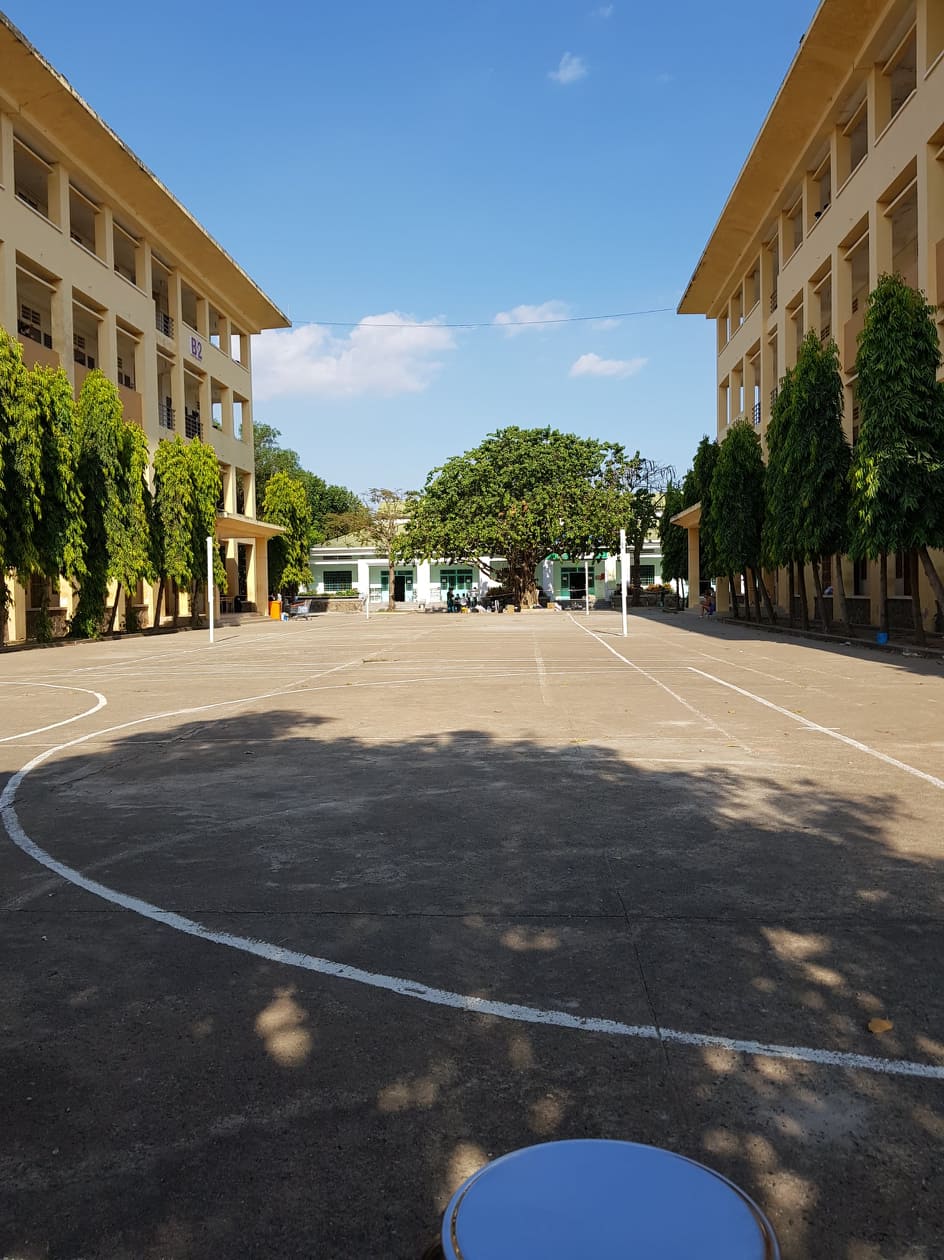

What were the sleeping arrangements like & how were the bathroom facilities?
“The sleeping conditions were pretty basic. One of the big problems was that they only had 90 minutes to prepare the facility before we arrived. There were six metal bunk beds in each room and a maximum of five people: so each person got a bunk bed to themselves. There were no mattresses, but we were supplied with a bamboo mat. Some people got army pillows and a sheet. We had two toilets in each room, but with no toilet seats. There were no showers; just a bucket and a tap. That was one of the things I had to get used to: washing myself with a bucket and washing my clothes in the same bucket. It was difficult at first. But the Vietnamese students in my room didn’t have a problem with it at all. We had running water and we could use as much as we wanted: there were no limits on that.”


What was the food like? When & where did you eat?
“For the first week or so it was absolutely delicious. We got fed three meals a day. The food was delivered to our rooms and we ate it in our rooms. The times varied, but usually meals were served around 8am, 11am, and 4pm. For breakfast, we got something different every day, like bánh mì (filled baguettes) or bánh bao (filled white doughy dumplings). For lunch and dinner it was cơm (rice meals), usually with pork or chicken (but after the first week we got a lot of organs), vegetables and a soup. We couldn’t get snacks between meals. For the first few days, we were allowed deliveries from outside. However, there were too many things being delivered to the people in quarantine, to the extent that the staff were getting exhausted by collecting and carrying everything, and the items were becoming a little bit ridiculous – people sent fridges, birthday cakes. It got to the point where is wasn’t controllable anymore and they couldn’t disinfect everything as well as search everything that was coming through. So they put a stop to deliveries on the fourth or fifth day that I was there. From then on we didn’t have any access to anything from outside the facility. I definitely lost weight and I became a lot fitter.”
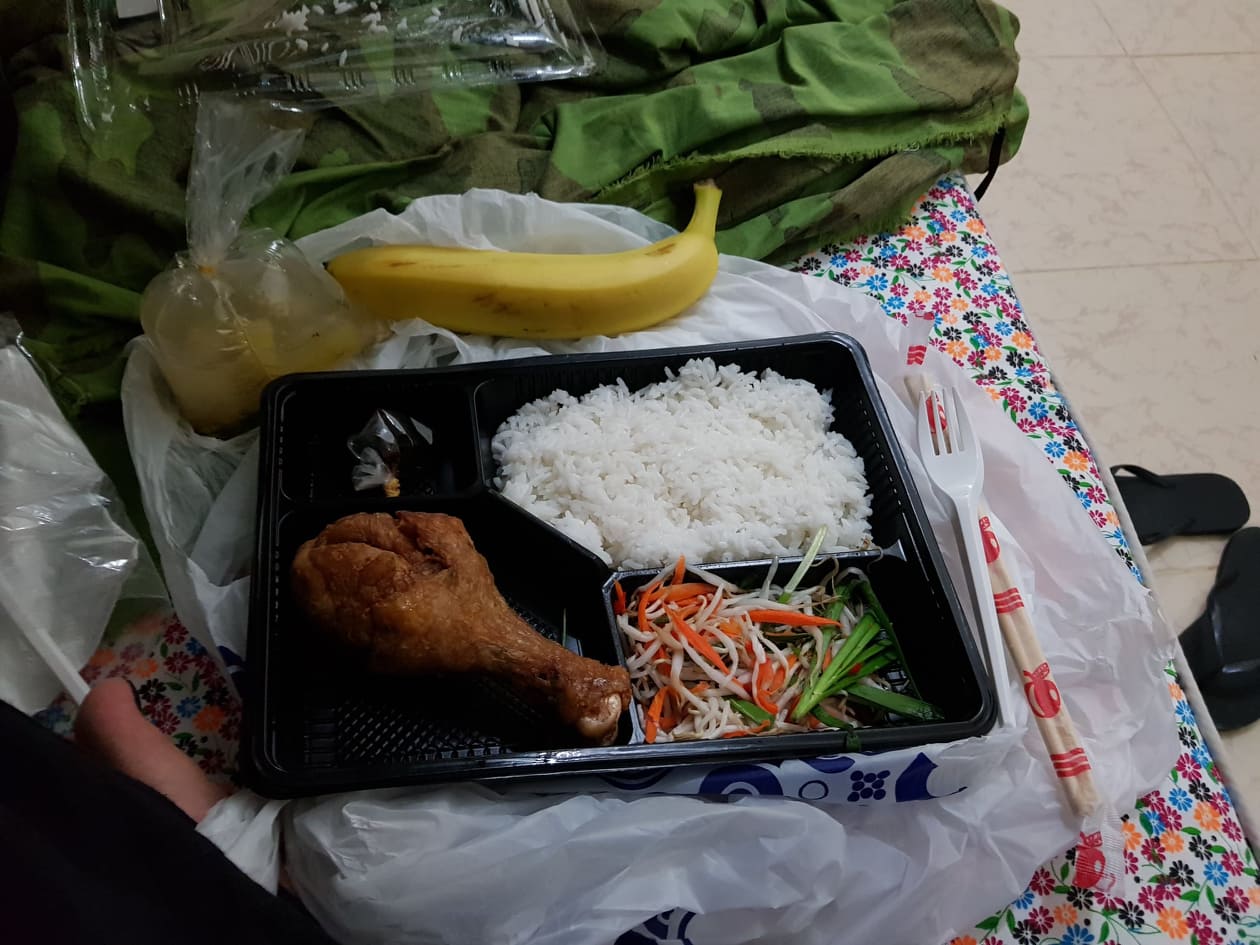

How was the medical treatment? Were you regularly tested & your health monitored?
“There was a doctor available who’d see to anyone about any medical complaints they might have. In terms of COVID-19, we had our temperatures checked twice a day, everyday. That was the main way they monitored us. Other than that, if we had any of the symptoms for COVID-19 we had to come forward. We were tested on two separated occasions for COVID-19: once in the first week, once in the second.”
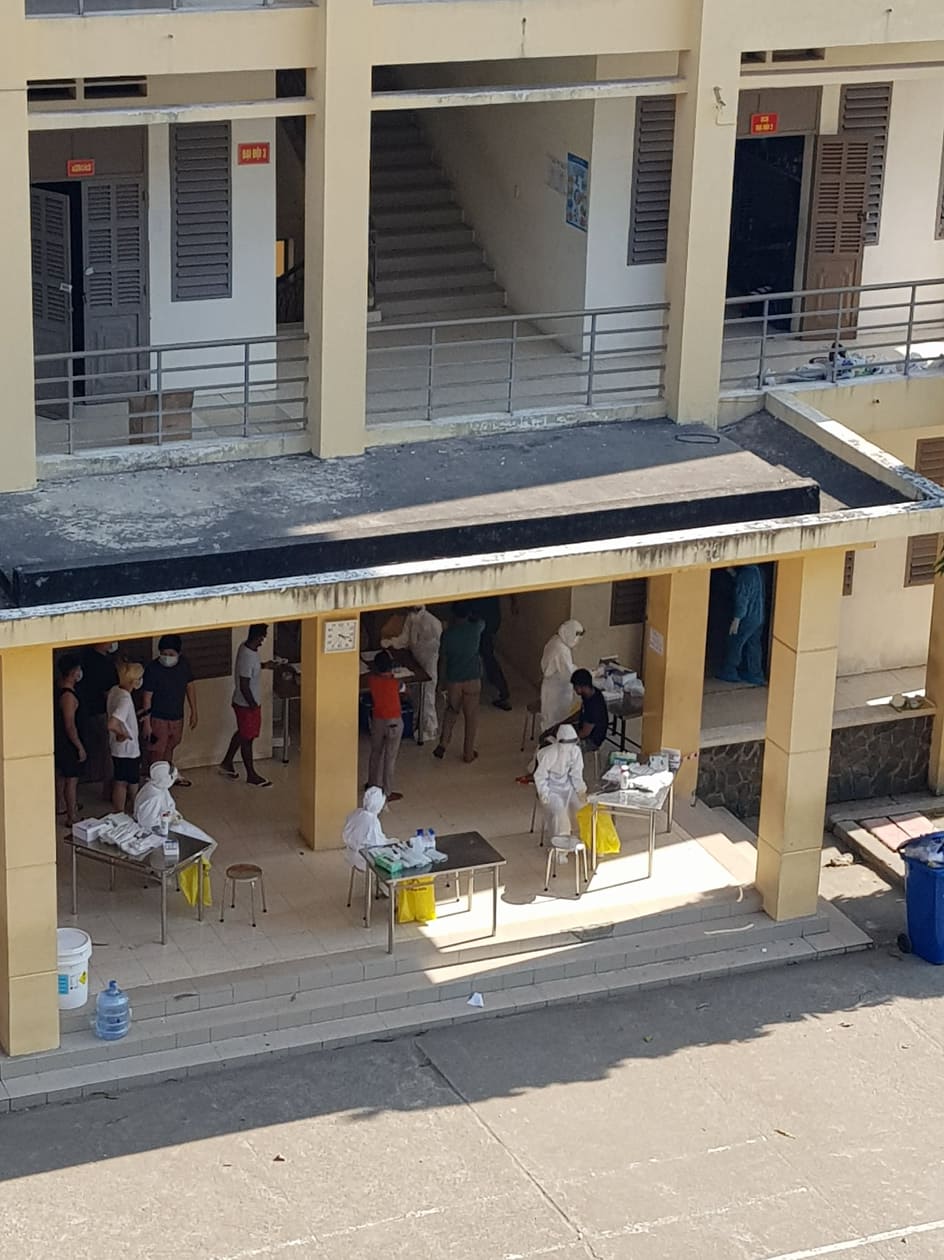
How did you cope with the language/cultural barrier, if any?
“I think that was the most difficult aspect of all the things during my time in quarantine. That’s something that I really did struggle with. It definitely wasn’t a cultural barrier; it was a language barrier. All of the instructions and all of the announcements were given in Vietnamese. I would have to go through two or three people in order to get translations of what was being said, or where I needed to be, or what I needed to do. It took me a very long time to understand even something very simple like ‘Go up to your room for a temperature check.’ So it was very difficult to get any clear information: whether it was about testing, where we were allowed to go, what we were allowed to bring in, how long we were going to be there for. I just asked the people closest to me whenever an announcement was made until I got a translation. People were pretty kind and understanding in these situations. There was a real sense of community, so everybody was very willing to help when, where, and how they could.”

Was there any tension between staff, guards, doctors, Vietnamese & foreigners?
“In general, no. But there was some tension between people on the floor above mine and the guards and staff there. A couple of people on that floor objected to the precautionary measures and rules that were in place, particularly when outside deliveries were halted. Unfortunately, this led to an angry confrontation with staff at the facility. But this was an exception to the general rule of calm, conviviality, patience, and community at the facility.”

Did you make any friends (or enemies) & were there any quarantine romances?
“I made quite a few friends. Everybody was incredibly supportive and open. And everyone was young and very active, so we all became a little community, like a neighbourhood. There were people you went to for different things, for different activities. When I was bored or I needed some company I would WhatsApp one of my friends that I’d made there – foreigners and Vietnamese – and we’d meet on the little trail near the lakeside for a chat or a cigarette. Most of my friends were young Vietnamese women, because that’s who I was around in my block. The only romance that I was aware of was an engagement proposal/anniversary (I’m not sure which, because it was difficult to understand the translation) of a couple who were already together when they went into quarantine.”

What did you do to fill your time?
“Some people organized dance classes every night at 5.45; there was badminton – loads of people playing badminton; there was a little trail near the lake that people walked up and down; and we’d often build puzzles or chat or have a cigarette. The equipment for these activities came via deliveries from outside. This was encouraged by the management at the facility, because they knew they didn’t have the resources to provide many activities themselves, so they relied on people ordering them, via friends and family, from outside. I became a lot fitter. I was on the top floor of the block and it was about six flights of stairs to get up and down every day. We also had a lovely small patch just behind the block that I was in, which had an abandoned lecture hall space outside and a little track that I would walk around every day.”


Did you ever feel bored, scared, frustrated, angry, euphoric?
“Absolutely. I felt all of the above. When I first arrived it was really frightening, because there wasn’t anyone there who could translate, so I didn’t know what was happening, and the people working there were overwhelmed: they were just about keeping their heads above water. We arrived very late at night, we didn’t know where we were going, we didn’t know what was it store for us. It was terrifying. Then, in the first week, there was a real feeling of gratitude and my heart felt full of thanks for all the sacrifices that had been made just to allow me into quarantine and to be looked after, and I felt touched by the resilience and sense of community that developed after such a short period: I think it was only 24 hours and suddenly there was a neighbourhood, a fully functioning community, and it did feel euphoric. I think that was the best part: the first few days.
After that it got difficult, not just for me, but for everyone. There was a dip in morale. There were periods of time when we were bored, and times when we were frustrated because we didn’t know how long we’d be there and we didn’t know when we were going to be tested for the virus. But it became a mental game: you couldn’t allow yourself to get into that bad place. So you would create small goals and small things you could achieve for the day, such as walking around, listening to a podcast, finishing a puzzle, and never allowing yourself to feel truly bored, because there really was no escape. Our days were quite strictly regulated, which could get frustrating: we were woken up every day at 7am by announcements over a public address system, then we were lined up to have our temperatures checked and have breakfast. You could choose when to go to bed, but some people stayed up late and disturbed the sleep of others, so they made an announcement that everyone needed to be quiet from 10pm onward. The most frustrating period was the final few days: our date of departure kept being changed, which tested our patience and mental fortitude.”
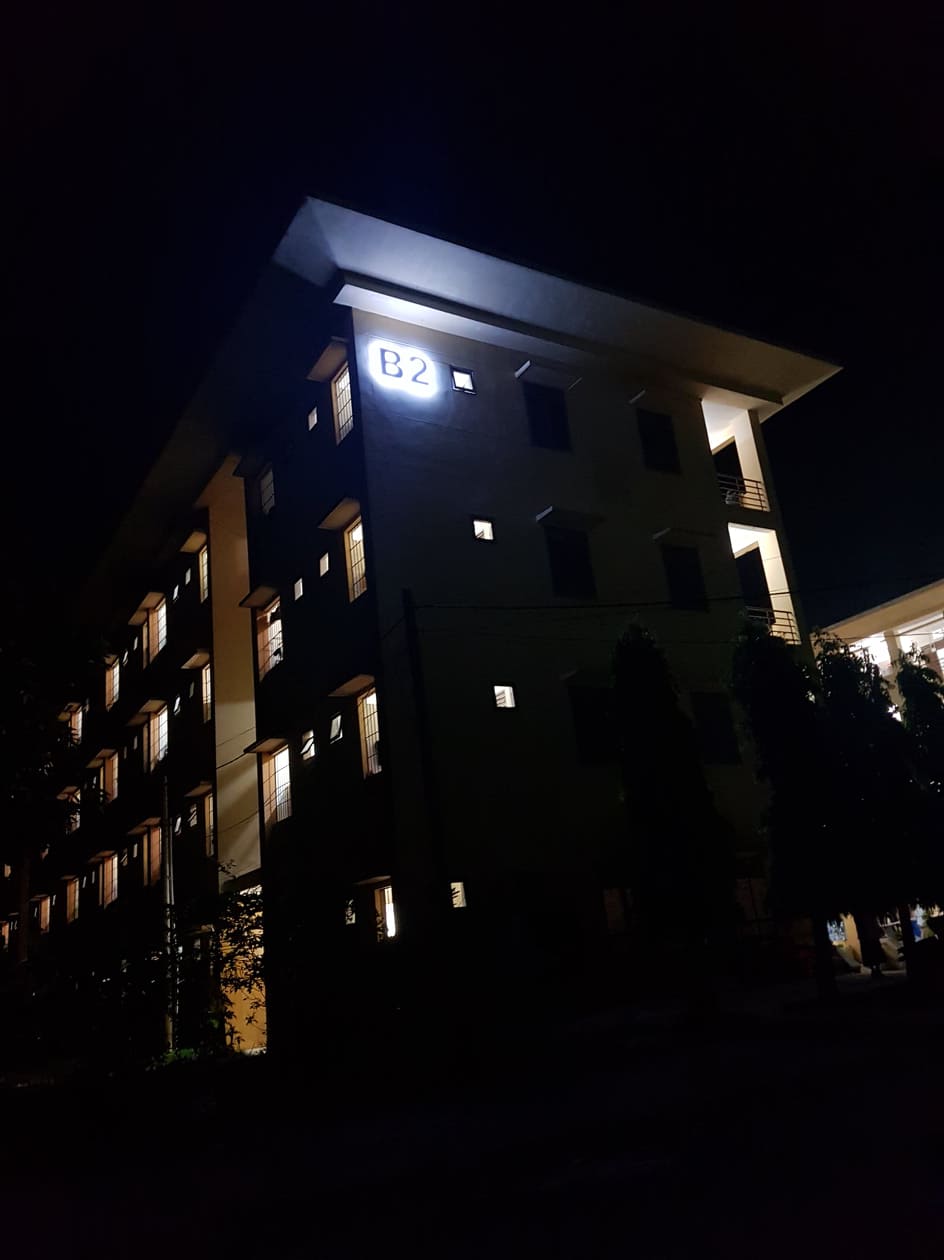
What did you miss most from the outside world?
“I think what I missed the most was the obvious: the freedom to come and go as you pleased, the freedom to make your own decisions about when you eat, what you eat, where you can sit. And I definitely missed the creature comforts of my home: a soft mattress, a bed I could sleep in. And, of course, my friends.”
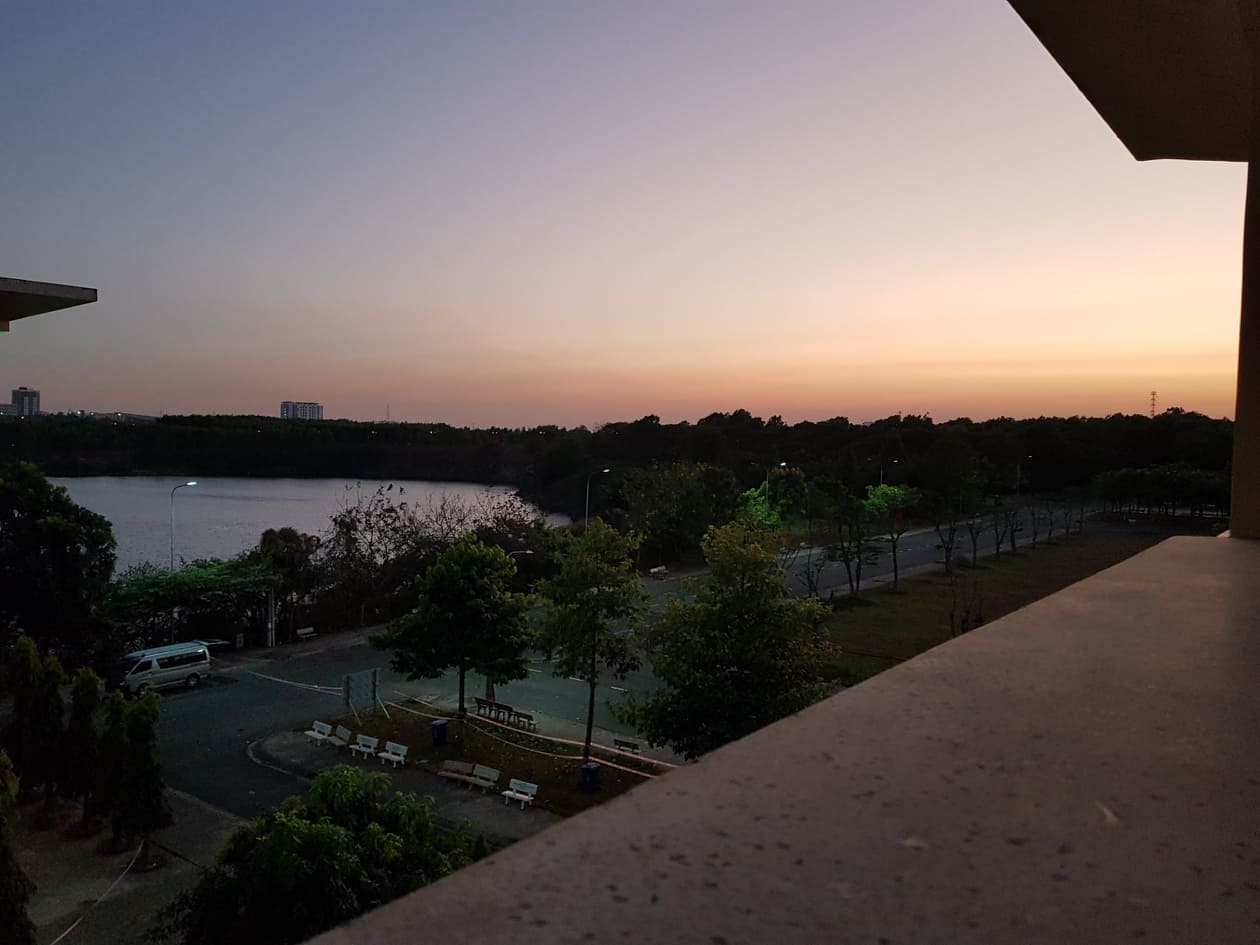
How have you adjusted to life after quarantine? Did you became institutionalized? Is there anything you miss about quarantine?
“Yes, I do think I became institutionalized. It was bizarre. But I think it’s specific to my particular circumstances. I had recently broken from my everyday habits of my life and work in Saigon to go on a contract pause. I had just spent a couple of weeks in Bali without any structure or plans, and then I went straight into quarantine, which was highly structured and planned. Then, when I returned home, I definitely fell back into the structures that had been imposed upon me during quarantine. And, as that structure slowly faded away, I really felt at a loss, and it took me a long time to find a post-quarantine structure that I felt comfortable with. Ironically, because I’m now required to self-isolate in Saigon for another 14 days, one of the things I miss about quarantine is being able to go outside and see a bit of nature. There was more open space in our quarantine facility than there is in my neighbourhood in Saigon. So I really miss that space.”

If there was anything you could change about your quarantine, what would it be?
“I wish there had been some form of official translation available: that would have made a big difference for the foreigners in quarantine, particularly when we first arrived at the facility in the dead of night; it would have been very comforting and reassuring to have someone there to translate for us. But, of course, I understand this was not a priority, as the vast majority of people at the facility were Vietnamese.”

Has your experience of quarantine changed your opinion of Vietnam & the Vietnamese people in any way? Has it changed you in any way?
“Absolutely. It’s cemented my opinion of Vietnam. I have such a feeling of gratitude for being in this country – everybody in quarantine felt it. The government has done an incredible job in dealing with this pandemic and with being transparent about what’s happening. In quarantine, they looked after us the best they possibly could under the conditions they were given. Everybody was so kind and so giving. You’ve seen the pictures on social media of soldiers giving up their beds and sleeping on the floor, medical workers sleeping on the bare ground – just to look after the people in quarantine. Aside from those working around the clock at facilities across the nation, I saw the sense of community that you get in alleyways in Ho Chi Minh City spring to life before my eyes in quarantine. I watched a community come together and create a living culture in the courtyard right in front of me.
Has it changed me? Yes, definitely, in many ways, but most importantly it’s taught me how to take things one day at a time. When you lose control of your life to that degree, you realize how much of it is a mental game. In quarantine, I had no control over my situation, so I learned to suspend my anxiety in order to cope, and only ever to look at things immediately ahead of me. I couldn’t plan for the future – even just a few days ahead of me – because I had no idea what was going to happen: would I still be in quarantine, would I be released, would I get sick? For an anxious person, like myself, this was a huge paradigm shift. I’m happy I made the decision to return to Vietnam from Bali. I feel well-looked-after and safe here. Vietnam is my home.”
*If you want to support Vietnam in its fight to contain COVID-19 please read this

Disclosure: I never receive payment of any kind for anything I write: my content is always free & independent. I’ve written & conducted this interview because I want to: I’m interested in my friend’s experiences in quarantine & I want my readers to know about it. For more details, see my Disclosure & Disclaimer statements here
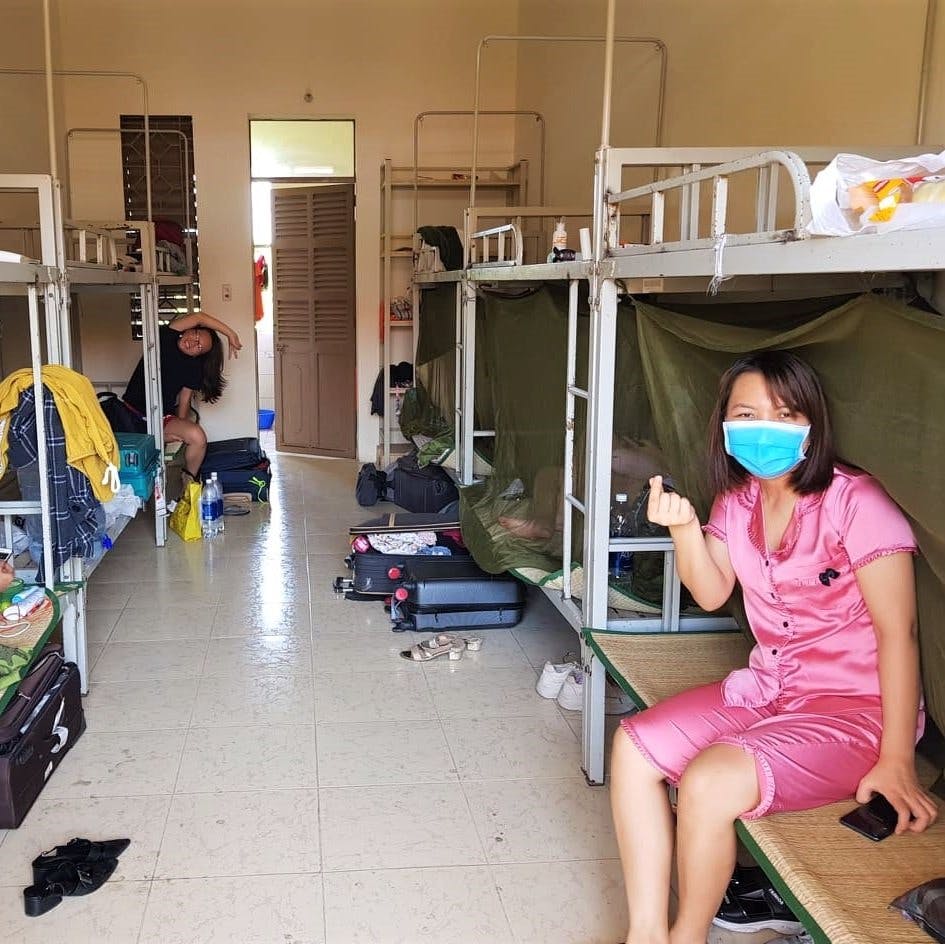
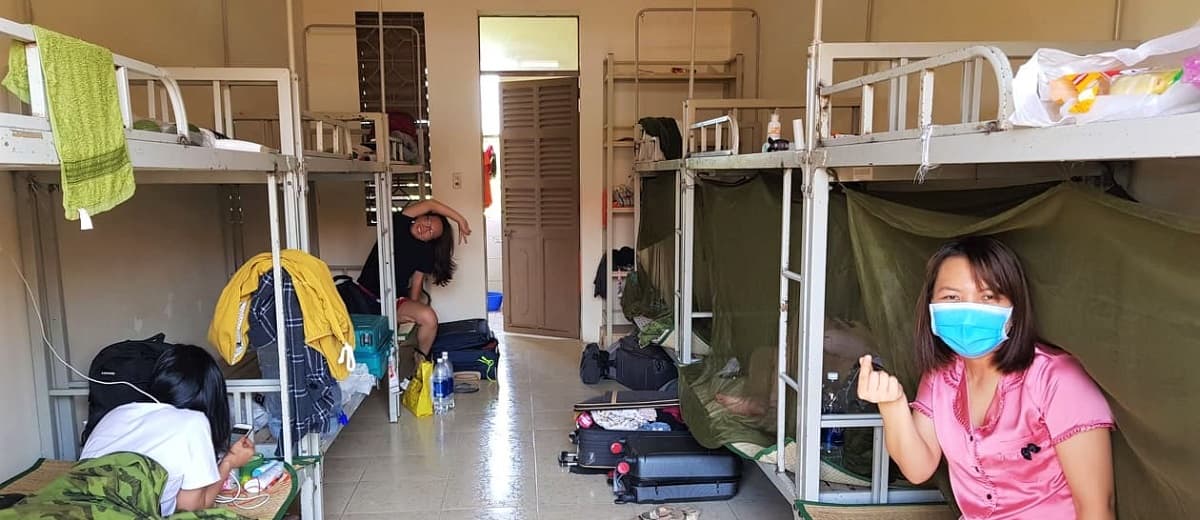
Thank you for sharing your friend’s true experience.
I’m going to get a very similar experience in Hanoi too.
It makes me a little less nervous
Hi Alex,
I’m sure you’ll have a similar experience. Although there are, of course, differences depending on which facility you’re in. Actually, the one Taz was in was considered relatively ‘difficult’ because they weren’t allowed to get food and other supplies delivered to them from outside the facility for most of their stay. Most other people I know who’ve been in quarantine said that ordering food etc was possible and made the experience even more bearable.
Good luck,
Tom
Hi Tom. This is a really great idea to interview Taz and getting her direct insight on how the Vietnamese government are dealing with it – head on. Despite not having the best resources they clearly do a great job with what they have. In Somalia, where I live/work (and now relocated Kenya), there is no way the government can handle COVID-19 anywhere close to the efficient level of VN. Mogadishu (the capital city) has a total of 40 ICU beds if that tells you anything.
By the way, many thanks for your blog. I actually learn quite a lot of motherland!
Stay safe!
Hi Phuong,
Thank you for you message.
Yes, I agree, Vietnam seems to be doing a great job.
It sounds like the situation in Somalia will be very difficult. I hope you are safe and well.
Best,
Tom
Thanks for that article Tom. Very informative. The Viet appear to be doing a spectacular job in handling Covid-19, particularly given their neighbourhood.
Peter
Thanks, Peter.
Yes, Vietnam does seem to have done a great job so far. I hope it continues that way.
Tom
Thanks for continuing to generate content that shines a bright light on this country and its people, despite the lack of available travel options. I’m curious, did Taz mention if any positive cases came out of her facility? If yes that’s unfortunate of course, but if no I can only imagine the frustration of feeling like it was all unnecessary.
Thanks, Ben.
As far as I know, there weren’t any tests that came back positive in her block at the quarantine facility. Even so, I don’t think Taz felt any frustration in that regard or that it was an unnecessary process – in fact, I don’t think it crossed her mind as she’s never mentioned it. I think just being part of a nationwide strategy that has, so far, been successful in keeping COVID-19 cases well below 300 is enough to make her feel she was part of a necessary process.
Tom
Thanks Tom for sharing Taz’s experience with us.
Here in Florida we are still self-isolated also. There were 1400 new cases in Florida the past 24 hours, and my county Manatee has the greatest per capita cases in the state.
I very much appreciate your articles.
Take care,
Rich
Hi Richard,
Sorry to hear about the situation in your county and Florida in general. I hope you continue to self-isolate and stay safe.
In Vietnam, the number of cases nationwide is still under 300, so they’ve done a very good job so far.
Best,
Tom
Thanks again Tom a very interesting article and gives some good insight into the different approaches each government has taken over the virus. I was in Vietnam in February with a group of British travellers and people were anxious about being I Asia then. As it has turned out events and actions in Asia appear to have made things significantly better there and particularly in Vietnam than in UK. Looking forward to getting across again soon when life back to normal. Nick
Thanks, Nick.
Yes, indeed, it does appear that things have worked out that way. But we’re all remaining cautious here in Vietnam.
I hope things do settle down in the not too distant future and that you get a chance to return to Vietnam soon.
Take care,
Tom
Tom and Taz, thanks for taking the time to produce this article. Very informative and insightful.
Thanks, Darren.
Good to hear from you. I hope you’re doing well.
Take care,
Tom
Thank you Tom for this article, and for enabling us to share some of Taz’s experience. There is no news here (Paris) of what the situation is or how it is evolving in Vietnam so I appreciate the snippets your blog provides even more. Stay well.
Hi Noemi,
Thank you. Yes, the situation in Vietnam appears to be under control at the moment. But we are all still being cautious here.
I hope you are safe and well,
Tom